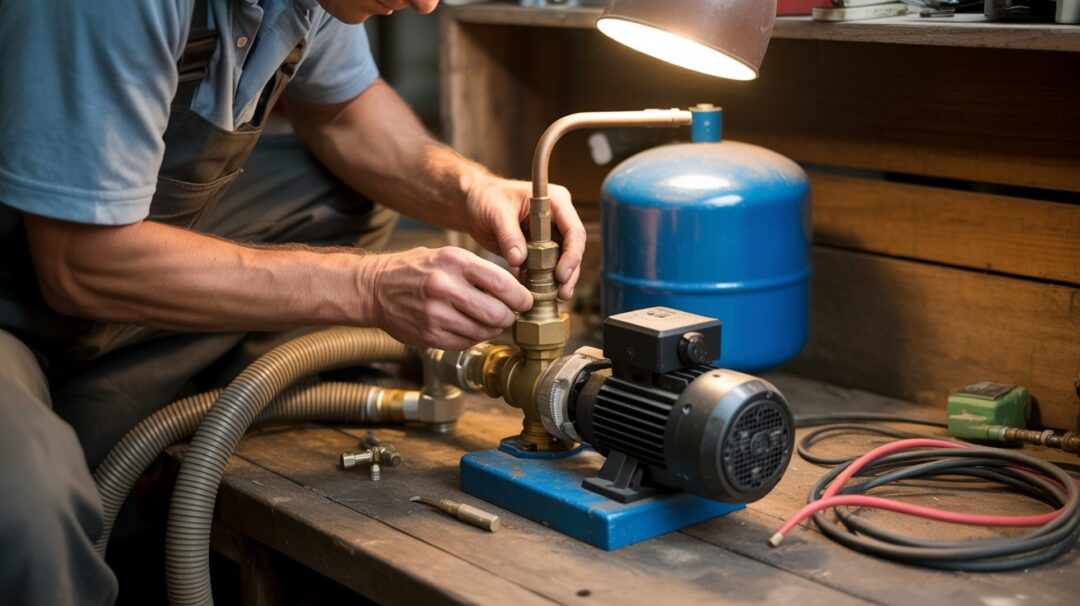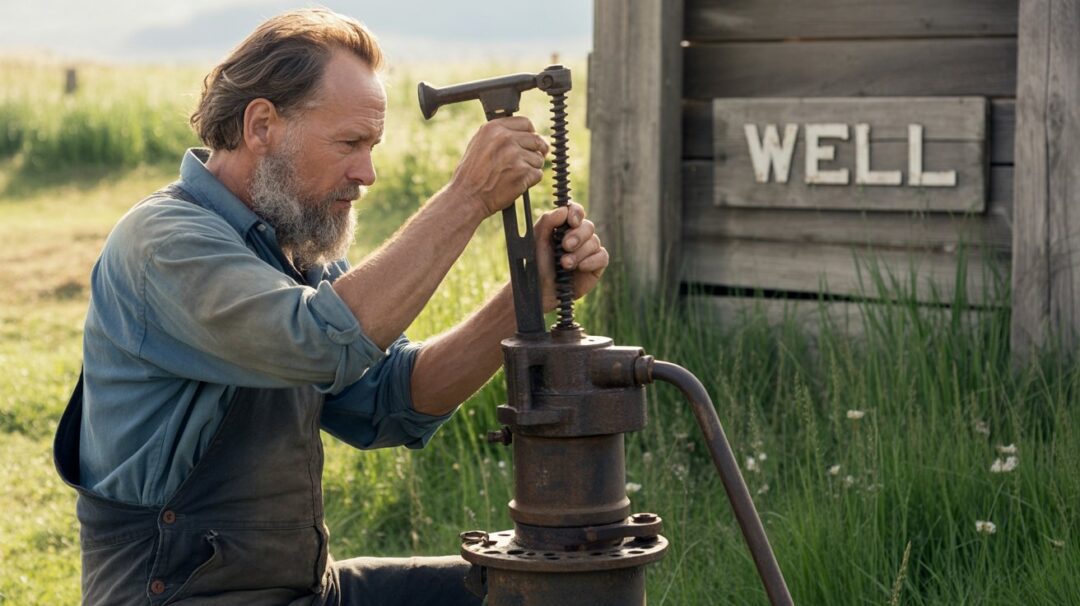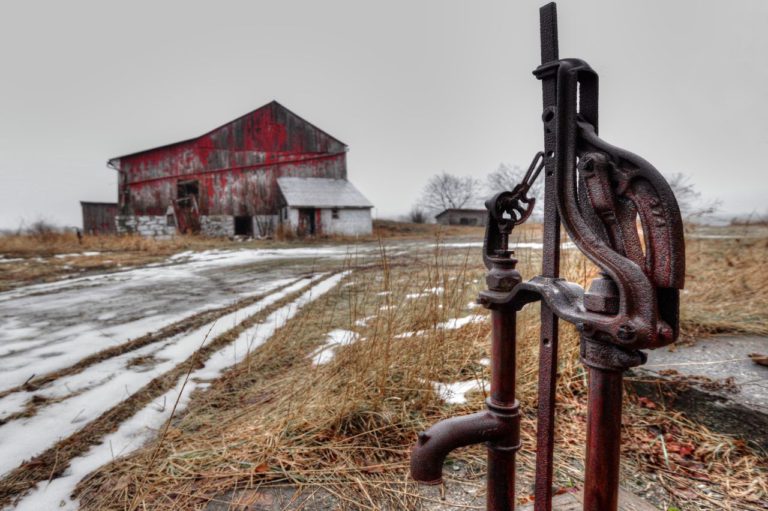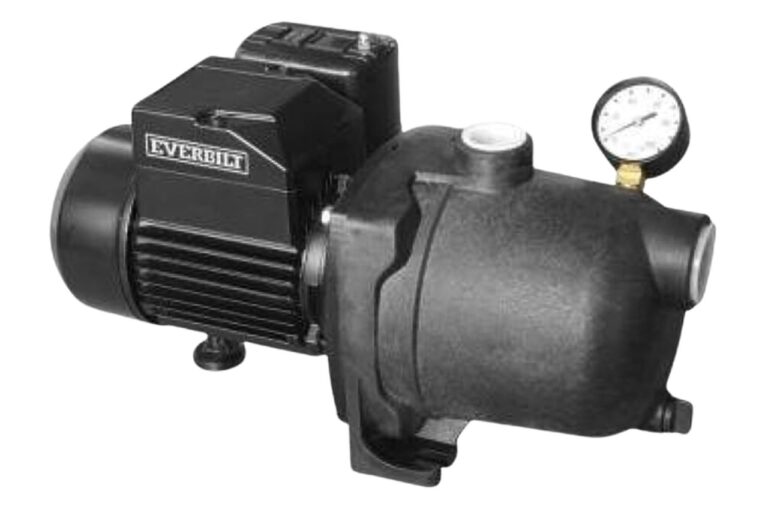Overheating Well Water Pump? Here’s What to Do
Have you ever stopped to think about the critical role your well water pump plays in your daily life? It’s easy to take for granted until it malfunctions, potentially leading to disastrous consequences. An overheating pump is not just a minor issue; it can significantly reduce the pump’s lifespan and pose serious safety risks to the operator and the surrounding environment.
A pump that is too hot can cause damage to nearby piping and vital components. The risks associated with overheating, such as cavitation due to partial suction line obstruction or loss of prime due to obstructed suction lines, can be mitigated with proper maintenance and checks. For more detailed information on handling an overheating water pump, you can visit this resource.
Key Takeaways
- Regular checks can prevent overheating issues.
- Using a water filter can remove impurities from cooling water.
- Monitoring the pH level of cooling water is crucial.
- Overheating can lead to reduced pump lifespan and safety hazards.
- Proper maintenance is key to preventing pump overheating.
Understanding Well Water Pump Systems
Understanding the intricacies of well water pump systems is essential for maintaining a reliable water supply. Well water pumps are the heart of any well system, responsible for bringing water from the underground well to the surface.
Types of Well Water Pumps
There are primarily two types of well water pumps: submersible pumps and jet pumps. Submersible pumps are located underwater in the well, providing efficient operation and quieter performance. Jet pumps, on the other hand, are typically installed above ground and are further divided into shallow well jet pumps and deep well jet pumps.
How Well Pumps Operate
Well pumps operate by using electrical energy to power a motor that drives the pump. The pump creates suction that draws water from the well into the pump, which then pushes the water up to the surface. The process involves a complex interplay of electrical and mechanical components.
Normal Operating Temperatures
A well water pump’s normal operating temperature typically ranges between 100°F to 150°F (38°C to 65°C), depending on the pump’s efficiency and the surrounding environment. Exceeding these temperatures can indicate potential issues.
The Importance of Proper Functioning
Proper functioning of a well water pump is crucial for preventing overheating and ensuring a consistent water supply. Regular maintenance, such as checking electrical connections and inspecting for wear and tear, is vital.
| Pump Type | Typical Application | Maintenance Needs |
|---|---|---|
| Submersible Pump | Deep wells, high water demand | Regular inspection of electrical connections |
| Jet Pump | Shallow wells, lower water demand | Frequent checks for leaks and wear |
As emphasized by experts, “Regular maintenance is key to extending the lifespan of your well water pump and preventing costly repairs.” Proper care and attention to the pump’s operation can significantly reduce the risk of overheating.
Signs Your Well Water Pump Is Overheating
Identifying the warning signs of an overheating well water pump is crucial for preventing damage and ensuring a steady water supply. When a well pump overheats, it can lead to a range of problems that affect your household’s water needs.
Decreased Water Pressure and Flow
One of the primary indicators of an overheating well pump is a noticeable decrease in water pressure and flow rate. If your faucets are producing less water than usual or the pressure feels weaker, it could be a sign that your pump is struggling.
Unusual Noises: Humming, Grinding, or Clicking
Unusual noises coming from the pump, such as humming, grinding, or clicking sounds, are also indicative of potential overheating issues. These noises often signal mechanical problems within the pump.
Hot Pump Housing and Components
If the pump housing or its components feel hot to the touch, it’s a clear sign that the pump is overheating. This excessive heat can damage the pump’s motor and other parts.
Frequent Circuit Breaker Tripping
Frequent tripping of the circuit breaker that controls the pump can also be a sign of overheating. This is often a protective response by the electrical system to prevent further damage.
Water Temperature Changes
Noticing changes in water temperature, such as warmer water than usual, can also indicate that the pump is overheating. This is because the pump’s inefficiency is causing it to generate more heat.
| Signs | Description | Potential Cause |
|---|---|---|
| Decreased Water Pressure | Less water coming from faucets | Pump struggling due to overheating |
| Unusual Noises | Humming, grinding, or clicking | Mechanical issues within the pump |
| Hot Pump Housing | Pump feels hot to the touch | Overheating causing damage |
Recognizing these signs early can help you take corrective action to prevent more severe damage to your well water pump system. Regular monitoring and maintenance are key to avoiding overheating issues.
Why Is My Well Water Pump Overheating? Common Causes
Overheating in well water pumps can be attributed to various factors, and recognizing these causes is key to resolving the issue. When a well water pump overheats, it can lead to reduced efficiency, increased energy bills, and potentially catastrophic pump failure.

Electrical Issues: Voltage Problems and Wiring Faults
Electrical issues are a common cause of well water pump overheating. Voltage fluctuations can put additional stress on the pump’s motor, leading to overheating. Similarly, wiring faults, such as loose connections or damaged insulation, can cause resistance that generates excessive heat.
- Inconsistent voltage supply
- Loose or corroded connections
- Damaged or worn-out wiring
Mechanical Problems: Worn Bearings and Impellers
Mechanical wear and tear is another significant factor. Worn bearings can cause the pump to work harder, generating more heat. Similarly, damaged or clogged impellers can reduce the pump’s efficiency, leading to increased motor load and heat buildup.
- Worn or corroded bearings
- Damaged impeller blades
- Clogged or blocked impeller
Water Supply Problems: Low Water Table and Clogged Intakes
Issues related to the water supply can also cause overheating. A low water table can lead to dry running, where the pump operates without sufficient water, causing it to overheat. Clogged intakes or screens can restrict water flow, putting additional strain on the pump.
Environmental Factors: Extreme Temperatures and Poor Ventilation
Environmental conditions play a role as well. Extreme ambient temperatures can affect the pump’s operation, with high temperatures exacerbating the risk of overheating. Poor ventilation around the pump housing can also trap heat, contributing to the problem.
- High ambient temperatures
- Poor air circulation around the pump
- Direct sunlight on the pump housing
By understanding these common causes, homeowners can take the first step towards diagnosing and resolving the overheating issue with their well water pump.
Diagnosing an Overheating Well Pump
Diagnosing an overheating well pump requires a systematic approach to identify the root cause. To start, it’s essential to follow a structured diagnostic process that includes safety precautions, visual inspections, and component testing.
Safety Precautions Before Inspection
Before inspecting the well pump, ensure your safety by turning off the power supply at the circuit breaker or fuse box. Verify that the pump is completely stopped and that there’s no voltage present using a non-contact voltage tester. Wear protective gear, including gloves and safety glasses, to protect against potential electrical or mechanical hazards.
Visual Inspection Steps
Begin the visual inspection by checking the pump’s surroundings for any signs of leakage, damage, or wear. Inspect the electrical connections for corrosion or damage. Look for any blockages or debris that might be obstructing the pump’s operation or ventilation.
Testing Electrical Components
Testing the electrical components is crucial in diagnosing an overheating well pump. Use a multimeter to check the voltage supply to the pump, ensuring it matches the manufacturer’s specifications. Inspect the capacitors for any signs of failure or wear.
Checking Water Flow and Pressure
Assessing the water flow and pressure is vital. Use a pressure gauge to measure the system’s pressure, comparing it to the recommended operating range. For flow rate measurement, use a flow meter to determine if the pump is delivering the expected volume of water.
Using Pressure Gauges
Attach the pressure gauge to the pump’s discharge line or a designated test port. Take readings under various operating conditions to identify any anomalies.
Flow Rate Measurement
Measure the flow rate by timing how long it takes to fill a container of known volume. Compare this to the pump’s rated capacity to identify potential issues.
By following these steps, you can effectively diagnose the cause of your well pump’s overheating and take appropriate corrective actions.
Immediate Actions for an Overheating Pump
When you suspect your well water pump is overheating, immediate action is crucial to prevent further damage.
Shutting Down Safely to Prevent Damage
The first step in addressing an overheating well pump is to shut it down safely. This involves switching off the power supply to the pump at the circuit breaker or fuse box. It’s essential to ensure that the shutdown is done properly to avoid any electrical shocks or further damage to the pump. For detailed guidance on safely shutting down your well pump, you can refer to resources like pump overheating mitigation.
Cooling Procedures for Different Pump Types
Different types of well pumps may require specific cooling procedures after being shut down. For instance, submersible pumps might need to be left to cool down naturally, while jet pumps could benefit from external cooling methods. Understanding the type of pump you have is crucial in determining the best cooling approach.
Temporary Water Solutions for Your Household
While your well pump is being repaired or cooled down, you may need to find temporary alternative sources of water for your household needs. This could involve using water from a nearby source, purchasing bottled water, or even using a temporary water supply system.
Documenting Symptoms for Troubleshooting
It’s helpful to document the symptoms your well pump is experiencing. This includes noting any error messages, unusual noises, or changes in water pressure. Such documentation can be invaluable when troubleshooting the issue or when consulting a professional for repairs.
DIY Solutions for Common Overheating Issues
When dealing with an overheating well water pump, implementing DIY solutions can be a cost-effective and efficient way to resolve the issue. Homeowners can often identify and fix the problem without needing to call a professional.
Clearing Blockages in Pipes and Filters
One common cause of overheating is blockages in the pipes or filters. Debris, sediment, or mineral buildup can restrict water flow, causing the pump to work harder and generate more heat. To clear blockages, start by inspecting and cleaning or replacing filters. For pipes, use a pipe cleaning tool or a mixture of vinegar and water to dissolve mineral deposits.
Improving Ventilation Around Pump Housing
Adequate ventilation is crucial for maintaining a safe operating temperature for your well water pump. Ensure that the pump housing is not enclosed or surrounded by objects that could obstruct airflow. Improving ventilation can be as simple as rearranging the surrounding area or installing a ventilation fan if necessary.
Addressing Electrical Problems: Connections and Capacitors
Electrical issues, such as faulty connections or malfunctioning capacitors, can lead to overheating. Check all electrical connections for signs of wear or corrosion and tighten or replace them as needed. For capacitors, testing their capacitance with a multimeter can help determine if they need replacement.
Fixing Water Supply Issues: Priming and Seal Replacement
Issues with the water supply, such as a loss of prime or worn seals, can also cause overheating. To address these, follow proper priming procedures and inspect seals for wear.
Step-by-Step Priming Process
- Turn off the power to the pump.
- Open the priming port and fill the pump housing with water.
- Replace the priming port cap and turn on the power.
- Monitor the pump’s operation to ensure it’s primed correctly.
Replacing Worn Seals and Gaskets
Inspect the pump for any worn seals or gaskets. Replacing these can prevent leaks and ensure proper operation. Use a seal puller to remove old seals and apply a suitable lubricant to new ones before installation.
By applying these DIY solutions, homeowners can often resolve overheating issues with their well water pumps. Regular maintenance and inspections can also help prevent future problems.
Professional Repairs: When to Call an Expert
If your well water pump continues to overheat despite trying all DIY solutions, it’s likely time to call in a professional. While DIY fixes can resolve some issues, certain problems require the expertise of a qualified technician to prevent further damage and costly repairs.
Signs of Major Pump Damage
Major pump damage can manifest in various ways, including cracked or broken pump housings, severely worn-out impellers, or damaged motor components. If you notice any of these signs, it’s crucial to seek professional help immediately to avoid further complications.
Electrical System Failures Beyond DIY Repair
Electrical issues, such as faulty wiring, malfunctioning capacitors, or damaged control boxes, often require professional attention. These components can be dangerous to handle without proper training, and a professional can ensure they’re repaired or replaced safely.
Well System Complications Requiring Specialized Equipment
Some well system complications, like deep well issues or problems with the pump’s installation, may require specialized equipment for diagnosis and repair. Professionals have access to the necessary tools and expertise to handle these complex issues.
Cost Considerations for Professional Repairs
While hiring a professional may seem costly upfront, it can save you money in the long run by preventing further damage and reducing the need for frequent repairs. It’s essential to weigh the costs and consider the long-term benefits of professional repairs.
Finding Qualified Well Pump Technicians
To find a qualified technician, look for professionals with experience in well pump repairs, check online reviews, and ask for referrals from friends or family. Ensure they have the necessary certifications and licenses to work on your well pump system.
By knowing when to call an expert, you can ensure your well water pump is repaired efficiently and effectively, providing you with a reliable water supply.
Preventing Future Well Pump Overheating
Well pump overheating can be prevented with regular maintenance and proper installation practices. By understanding the causes of overheating and taking proactive measures, you can ensure your well pump operates efficiently and effectively.
Regular Maintenance Schedule and Checklist
Establishing a regular maintenance schedule is crucial for preventing well pump overheating. This includes:
- Checking electrical connections and components
- Inspecting the pump and motor for signs of wear
- Ensuring proper lubrication of moving parts
- Testing the pump’s performance and pressure
Proper Installation Practices for New Pumps
Proper installation is key to preventing future overheating issues. This involves:
- Selecting the right pump size for your well and water needs
- Ensuring correct electrical wiring and connections
- Installing the pump in a well-ventilated area
- Following manufacturer guidelines for installation
Monitoring Systems and Protective Devices
Implementing monitoring systems and protective devices can help detect potential issues before they lead to overheating. This includes:
- Temperature sensors and alarms
- Pressure monitoring systems
- Circuit breakers and overload protection
Seasonal Considerations for Pump Operation
Different seasons bring different challenges for well pumps. Understanding these seasonal considerations can help prevent overheating.
Summer Heat Precautions
During summer, ensure your well pump is protected from extreme heat. This can involve:
- Providing shade for the pump housing
- Ensuring good ventilation around the pump
- Monitoring for increased water demand
Winter Freeze Protection
In colder climates, protecting your well pump from freezing temperatures is crucial. This includes:
- Insulating exposed pipes and components
- Using freeze protection devices
- Ensuring the pump is properly winterized
By following these guidelines and maintaining a proactive approach to well pump maintenance, you can significantly reduce the risk of overheating and ensure a reliable water supply for your household.
When to Consider Replacing Your Well Pump
Understanding when to replace your well water pump can save you from future headaches. A well pump is a significant investment for any homeowner relying on well water, and its failure can lead to significant inconvenience and expense.

Age and Efficiency Factors
The age of your well pump is a critical factor in determining whether it should be replaced. Most well pumps last between 8 to 15 years, depending on the quality of the pump, maintenance, and usage. As pumps age, their efficiency decreases, leading to increased energy consumption and higher bills. If your pump is approaching or has exceeded its expected lifespan, it might be time to consider a replacement.
Recurring Overheating Issues Despite Repairs
If your well pump continues to overheat despite repairs, it may be a sign that the pump is nearing the end of its service life. Repeated overheating can cause irreversible damage, and continuing to repair might not be cost-effective in the long run.
“Replacing a well pump is not just about fixing the immediate problem; it’s about ensuring long-term reliability and efficiency.” – Water System Expert
Cost Analysis: Repair vs. Replace
When deciding between repairing and replacing your well pump, a cost analysis is essential. If the repair costs are more than half the price of a new pump, it’s usually more economical to replace it. Consider not just the immediate costs but also the potential savings from increased efficiency and reduced energy bills with a new pump.
Selecting the Right Replacement Pump for Your Well
Choosing the right replacement pump involves considering several factors, including the size of your well, water demand, and the pump’s intended use. Consulting with a professional can help ensure that you select a pump that meets your needs and is energy-efficient.
Energy Efficiency Considerations
New well pumps are designed to be more energy-efficient than older models. When selecting a replacement, look for pumps with high-efficiency ratings. This not only reduces your energy consumption but also lowers your utility bills. Investing in an energy-efficient pump can provide long-term savings and reduce your environmental footprint.
Conclusion
By understanding the causes of well water pump overheating and taking preventive measures, you can ensure the longevity of your pump. Regular well water pump maintenance is crucial to prevent issues such as decreased water pressure, unusual noises, and hot pump housing.
Proper well water pump care involves regular inspections, cleaning blockages, improving ventilation, and addressing electrical problems. By following these steps, you can reduce the risk of overheating and prolong the lifespan of your well pump.
Homeowners who prioritize well water pump maintenance can enjoy a reliable water supply, reduced energy bills, and minimized repair costs. By staying proactive and addressing potential issues early, you can ensure your well water pump operates efficiently and effectively for years to come.
Frequently Asked Questions
What are the common signs of well water pump overheating?
Common signs include decreased water pressure, unusual noises like humming or grinding, hot pump housing, frequent circuit breaker tripping, and changes in water temperature.
Why is my well water pump overheating?
Well water pump overheating can be caused by electrical issues, mechanical problems, water supply issues, or environmental factors such as extreme temperatures and poor ventilation.
How do I diagnose an overheating well pump?
Diagnosing involves safety precautions, visual inspection, testing electrical components, and checking water flow and pressure to identify the root cause.
What immediate actions should I take when my well pump is overheating?
Shut down the pump safely, follow cooling procedures, consider temporary water solutions, and document symptoms for further troubleshooting.
Can I fix well water pump overheating issues myself?
Yes, DIY solutions include clearing blockages, improving ventilation, addressing electrical problems, and fixing water supply issues like priming and seal replacement.
When should I seek professional help for my well water pump?
Seek professional help if you notice signs of major pump damage, electrical system failures, or well system complications that require specialized equipment.
How can I prevent future well pump overheating?
Prevention involves regular maintenance, proper installation practices, monitoring systems, and considering seasonal factors that may affect pump operation.
How do I know if I should replace my well pump?
Consider replacement based on the pump’s age, efficiency, recurring overheating issues, and a cost analysis comparing repair versus replacement costs.
What factors should I consider when selecting a replacement well pump?
Consider the pump’s compatibility with your well, energy efficiency, and the right size for your water needs to ensure optimal performance.
How often should I perform maintenance on my well water pump?
Regular maintenance should be performed according to a scheduled checklist, which may vary depending on the pump type and usage, to prevent overheating and ensure longevity.







